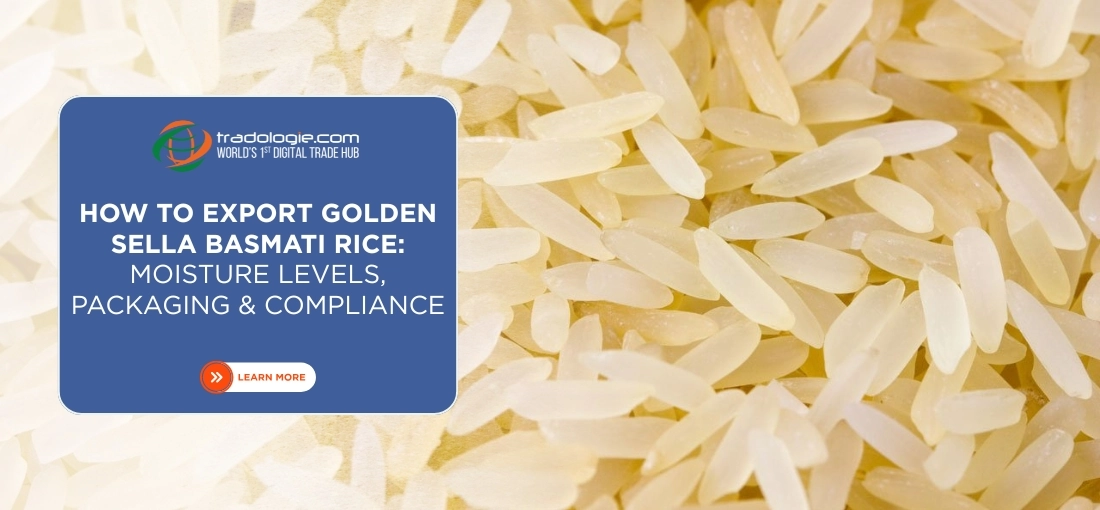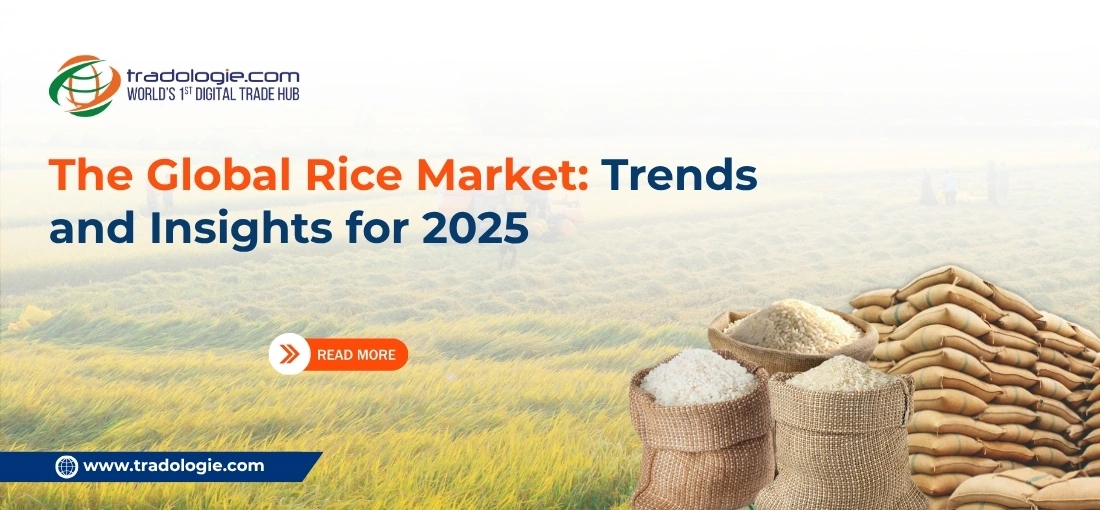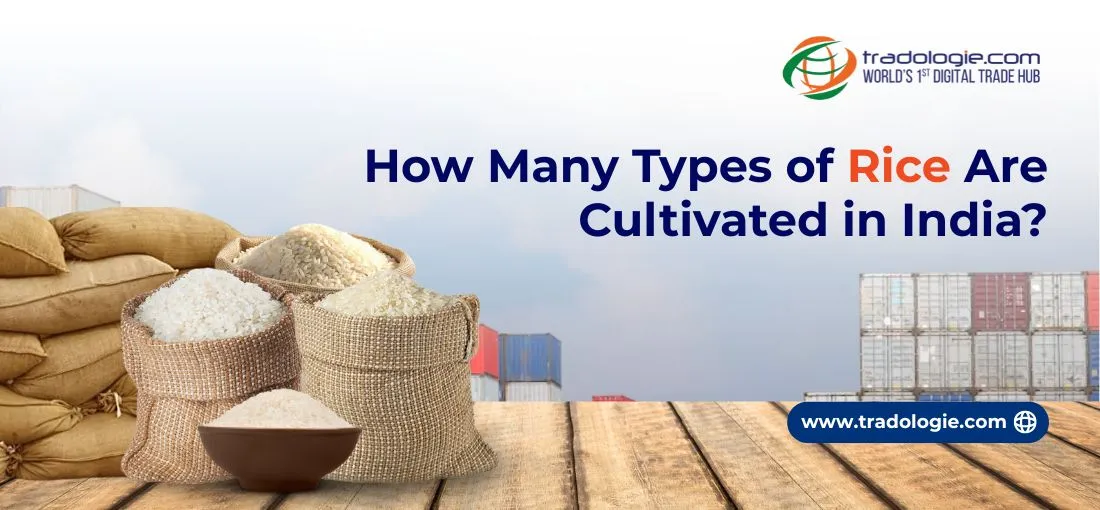How to Export Golden Sella Basmati Rice: Moisture Levels, Packaging & Compliance
Key Highlights:
- High Global Demand : Golden Sella Basmati Rice is prized for its aroma, long grains , and premium quality, making it a leading Indian export.
- Moisture Standards : Maintain 12-13% moisture to prevent fungal growth and preserve freshness as per APEDA guidelines.
- Packaging & Labeling : Use food-grade PP woven bags or BOPP pouches and follow EU Regulation (EU) No. 1169/2011 for labeling details like crop year, moisture %, and origin.
- Certifications & Compliance : Obtain key documents such as FSSAI license, APEDA registration, Phytosanitary Certificate, and Certificate of Origin while meeting Codex and MRL standards.
- Logistics & Documentation : Ensure containers are fumigated and moisture-proof, with accurate shipping documents to avoid clearance delays.
- Digital Trade Edge : B2B platforms like Tradologie.com help exporters connect with verified global buyers, conduct live negotiations, and manage the entire export process efficiently
Introduction
In the global agri-trade ecosystem, Golden Sella Basmati Rice is known for its premium quality and high export value. It's a high-quality aromatic rice that is renowned for its mesmerizing aroma and long grain length. Thus, there is no surprise that it is one of the most demanded Indian agro commodities in the global trade markets. But to successfully sell Golden Sella Rice in foreign markets, exporters must understand and comply with the intricate standards of moisture levels, packaging norms, and international certifications govern the trade.
Today, the golden seller basmati rice importers across the Gulf countries, Europe, and North America buy Golden Sella Rice trusted B2B digital platforms that facilitate seamless procurement across to their ports timely and securely
Moisture Content Standards
The moisture content plays a critical role in preventing rice from adulteration, and exporting is successful across the globe. The acceptable limit typically ranges between 12% and 13% for Golden Sella Rice exports . This, to a large extent, ensures the grains remain fresh, aromatic, and stay away from any type of fungal growth during transit.
Moisture exceeding this threshold can trigger mold development or infestation—both red flags for importing authorities. Exporters must invest in calibrated digital moisture analyzers and adopt controlled drying systems to achieve uniformity.
Maintaining an optimal moisture level not only enhances shelf life but also preserves the visual appeal and cooking quality of the grains as per the guidelines of the Agricultural and Processed Food Products Export Development Authority (APEDA). In fact, these are two critical things that heavily influence buyer preferences in global markets.
Packaging Specifications
In international trade, packaging plays a dual role—protecting product integrity and reflecting brand professionalism. Golden Sella Rice wholesalers commonly use polypropylene (PP) woven bags with food-grade inner liners to safeguard grains from moisture ingress. For retail markets, BOPP laminated pouches are preferred due to their superior print quality and airtight sealing.
Bulk exports typically rely on 25kg and 50kg sacks , especially when shipping to Middle Eastern and African markets. However, exporters must ensure the packaging material complies with EU food contact standards and GCC food-grade norms .
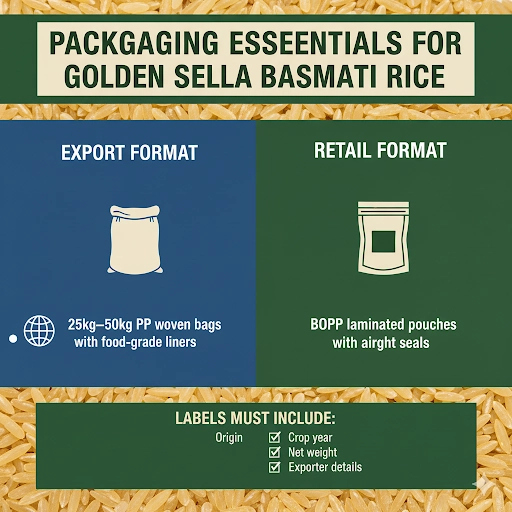
Labels must include vital details such as the product name, crop year, moisture percentage, net weight, exporter's name, and the country of origin. For shipments to the European Union, labeling must comply with Regulation (EU) No. 1169/2011 , which standardizes food information disclosure for consumers.
Quality Certifications and Compliance
Certifications are the backbone of trust in the global rice trade. Every exporter planning to sell Golden Sella Rice internationally must secure the following key documents:
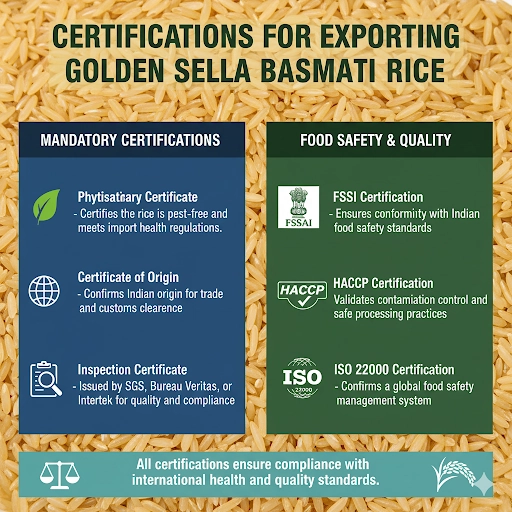
Markets such as the EU and USA also enforce strict controls over Maximum Residue Limits (MRLs) for pesticides and heavy metals. Compliance with Codex Alimentarius guidelines ensures that exported rice meets these safety parameters. Failure to do so can lead to shipment rejections, financial losses, and trade suspensions.
Logistics and Export Documentation
Shipping Golden Sella Rice requires precision and coordination across multiple stakeholders. Containers must be fumigated, moisture-proofed, and equipped with desiccant packs to safeguard grain quality during transit. For long-haul shipments to Europe or North America, exporters often use thermal liners to protect against temperature fluctuations.
Critical documentation includes the commercial invoice, packing list, bill of lading, certificate of inspection, and letter of credit (L/C) terms. Any inconsistency between these documents can delay customs clearance or payment realization.
Major ports such as Mundra, Kandla, and Nhava Sheva handle a significant share of India's Basmati exports . Timely coordination with freight forwarders ensures optimized container utilization and faster turnaround.
Leveraging Digital B2B Marketplaces
With the global rice trade increasingly going digital, exporters now sell Golden Sella Rice online through verified international trade platforms. Platforms such as Tradologie.com have transformed the way Golden Sella Rice wholesalers connect with global buyers.
Tradologie enables exporters to negotiate in real time with over 800,000 verified importers across 100+ countries , simplifying the process of selling and buying Golden Sella Rice in bulk. The platform also provides inquiry-to-payment assistance , linguistic support, and trade documentation guidance—making it easier for exporters to expand into new markets confidently.
In an era where trust and compliance define business continuity, such B2B digital ecosystems offer a strategic advantage by ensuring verified transactions, reducing intermediary costs, and building long-term business visibility.
Conclusion
Exporting Golden Sella Basmati Rice is not merely about agricultural excellence—it's about understanding trade dynamics, ensuring product stability, and meeting international standards with precision. From controlling moisture levels to adopting advanced packaging solutions and securing certifications, every stage defines the exporter's credibility in the global marketplace.
As the world increasingly moves toward digital trade facilitation, exporters who sell Golden Sella Rice online through trusted B2B networks are better positioned to reach verified buyers, build stronger partnerships, and secure bulk orders with confidence.
In the evolving agro-export landscape, Golden Sella Rice remains India's goldenpportunity—one that rewards those who blend tradition with technology and compliance with consistency.

